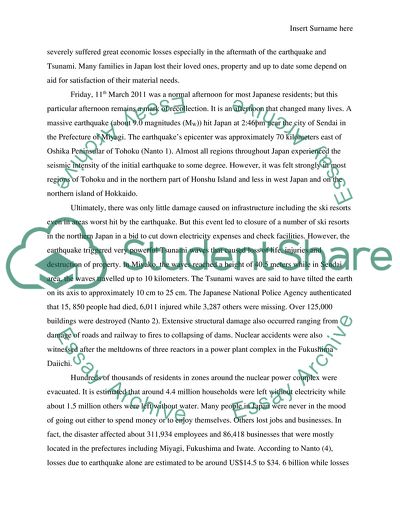Cite this document
(The Great East Japan Earthquake and Tsunami Disaster Research Paper, n.d.)
The Great East Japan Earthquake and Tsunami Disaster Research Paper. https://studentshare.org/environmental-studies/1768305-current-event-paper-on-something-that-happen-outside-of-the-us-in-the-last-12-months
The Great East Japan Earthquake and Tsunami Disaster Research Paper. https://studentshare.org/environmental-studies/1768305-current-event-paper-on-something-that-happen-outside-of-the-us-in-the-last-12-months
(The Great East Japan Earthquake and Tsunami Disaster Research Paper)
The Great East Japan Earthquake and Tsunami Disaster Research Paper. https://studentshare.org/environmental-studies/1768305-current-event-paper-on-something-that-happen-outside-of-the-us-in-the-last-12-months.
The Great East Japan Earthquake and Tsunami Disaster Research Paper. https://studentshare.org/environmental-studies/1768305-current-event-paper-on-something-that-happen-outside-of-the-us-in-the-last-12-months.
“The Great East Japan Earthquake and Tsunami Disaster Research Paper”. https://studentshare.org/environmental-studies/1768305-current-event-paper-on-something-that-happen-outside-of-the-us-in-the-last-12-months.


